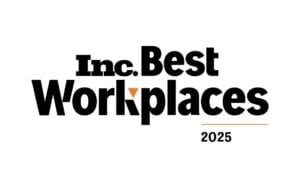How many website visits do you receive each month? Have you seen that number plateau or bounce confusingly from low to high to low? Are you ready for a straightforward approach that you can start using today?
Fantastic. We’ve got a eight-step, actionable solution for driving organic traffic to your B2B website. It includes a mix of search engine optimization (SEO), Wikipedia work, and online reputation management.
Let’s get started.
Table of Contents

1. Dedicate Time and Energy to Website Content (SEO)
Content plays an important role in determining where you rank on search engine results pages (SERPS), and ranking, especially on the first two pages of Google, will go a long way to driving organic traffic to your site. So, you want to pay a lot of attention to your content, or onsite SEO. This includes what’s on your page, your major headers, and your metadata.
Metadata refers to the meta title and meta description for every page on your site. Google looks to see what keywords are in your title and description, and whether or not those keywords match the keywords and topic of each individual page. This means that everything needs to work together if you want to get a thumbs-up from Google. You also need to make sure that your meta titles and descriptions are clear and engaging – they might be what potential visitors see on SERPs and will determine whether someone is encouraged to click through to your site or give it a pass.
Before creating content (whether a blog or a website page) you should do keyword research. You can do this using a site like Moz or Ahrefs. This ensures that your pages have search traffic potential. Then be sure that at least some of those keywords make an appearance in your metadata. Also, be sure that you aren’t guilty of keyword stuffing. It makes for poorly written content, which will turn visitors away, and Google will use it against you.
Final tip, be sure you have internal links linking back to your homepage and main pages. These internal links establish information hierarchy and give Google the ability to find all the pages on your website. If Google can’t find a page, there’s no way for it to rank.
2. Create Currently Relevant and Evergreen Blog Content (SEO)

If you have a blog, posting regularly and frequently will help you establish a good reputation with Google. The better your reputation, the better your domain authority, and the better your domain authority, the more likely you are to rank well on Google. So, be sure to post new, relevant, and helpful content monthly.
We recommend a mix of currently trending topics and what’s known as evergreen content. Hot-right-now topics can be a great way to attract visitors, but as the topic fades in popularity, it won’t have the same appeal, which can lead to a slump in organic traffic. This is where evergreen content comes in. This is content that is always relevant and always of interest to potential customers. Think of the difference between “Understanding how Google’s 2020 Update Affects You,” and “5 Simple Ways to Increase Sales.”
Evergreen content will work for you week after week, month after month, and year after year. The only thing you might need to do is occasionally link to older evergreen content when you post new content; and link from older content to newer content.
Bonus: Google uses links as one of their ranking factors and if your material truly stands-out, other websites will want to link back to you. You can also pitch a topic to another site and write a guest post. Not all guest posts will include links, but this process will at least get your company name in front of new potential customers.
3. Use One (or More) SEO Tools (SEO)
If you aren’t thinking about SEO and incorporating it into your every page, you aren’t doing what needs to be done to get your website in front of potential investors and customers. Several of the tips on this list revolve around SEO so it’s safe to say that we consider it one of the most necessary marketing tools out there. While search engine optimization is a long and complicated process, it can be made easier with SEO tools. We suggest using one or more of the following tools to get analytics in an easy-to-understand format that invites SEO success.
- Google Search Console: this is Google’s official way of talking to you about your site. Use it to discover any usability issues with your site, as well as your currently ranking keywords, current backlinks, indexed pages, security issues, and more.
- SEMrush: this research tool provides detailed information about keywords, their position in SERPS, the URL rankings for each keyword, and how that traffic has changed over the last 12 months.
- Moz: this SEO tool packs in a lot – keyword recommendations, performance insights, site crawls, and more.
- Ahrefs: use this tool to analyze your site and competitors’ sites to get key insight into why and where competitors rank the way that they do.
- Answer the Public: input any keyword into this site and it will return several cool graphics that display related questions and phrases people use when searching for that keyword. This is useful for planning content.
4. Claim Your Knowledge Panel (SEO)

Knowledge panels are the information panels that dominate the right hand side of Google’s search results, which means they provide great coverage for whatever business, person, or object they describe. More prominent screen time leads to more awareness which leads to more organic traffic. Win, win!
Typically, these panels include: a featured image, a title (the name of a business), a subtitle, a description, and social profiles. Other miscellaneous items might be included depending on the topic of the panel.
To truly reap the benefits of your knowledge panel, you need to make sure its information is accurate and up-to-date. It should be working for you not against you. Claiming your knowledge panel gives you the power to suggest changes to any inaccurate information.
Claiming a panel isn’t difficult, but there are a few items you will need before beginning: edit access to 2-5 official profiles for the company or person you are claiming; the ability to upload a document that verifies a business association; and a selfie of you holding a government issued ID.
Once you’re ready, go to Google and search for the company or person you are claiming. When the knowledge panel appears, click on “claim knowledge panel,” and then click “Get Verified.” Fill out the form that appears and then submit.
Once verified as an authorized representative of your business/brand, you’ll see a box at the top of your claimed knowledge panel that allows you to suggest edits.
5. Expand Your Reach (and Authority) with Links (SEO)
As we mentioned in #2, Google includes backlinks as one of its ranking factors. This ties into its search for authoritative, trustworthy sites. The thinking is that good, quality sites tend to link to each other, while no one wants to link to spammy sites. The more times that relevant, authoritative sites link back to you, the more your reputation grows, and the more likely Google is to rank you higher on SERPs, driving more organic traffic your way. Not to mention all the traffic that the links themselves will generate! Clearly, links are a good thing.
So, how do you get links? First, you need to have good content that stands out in some way from all the other content available on your chosen topic. The better your content, the more that other sites are going to want to link to it. If you have poorly written, irrelevant content, no amount of begging will earn you links. Once you have strong content, here are a few methods for earning backlinks:
- Reach out to close customers and partners
- Build relationships with local or national business associations
- Refurbish top content and share it on multiple platforms – for example, turning a blog into a video post and sharing it on YouTube
- Promote content using social media
6. Use Wikipedia to Boost Visibility (Online Reputation Management)

Many companies don’t include Wikipedia in their marketing strategy, and that’s a problem. Wikipedia is the second most visited website in the world. It almost always ranks as a top 3 search result, and is a definitive 3rd party source for consumers, investors, and the press. It’s likely that someone will form an impression of your company based on your Wikipedia page before they visit your website.
Basically what we’re saying is that Wikipedia is a highly visible part of a company’s image and can affect online reputation.
So, here’s what you need to do. Review your page and see if it accomplishes the following: accurately describes what your company does, briefly outlines company history, lists core products and services, and mentions current leadership and notable awards. The pages’s infobox should also be complete with all standard information and the current company logo. The page should be periodically reviewed to make sure it’s up-to-date and accurate.
When you’ve got that covered, focus on increasing your company’s visibility by using Wikipedia categories. All articles are indexed into searchable categories, and the more categories that a page has, the more places it will appear throughout Wikipedia. All categories that a page belongs to are listed at the bottom of the page.
Bonus: since Wikipedia ranks high in search results, it can potentially be used to push down any negative press.
7. Reorganize Negative Wikipedia Content (Wikipedia)
Because Wikipedia is an open source encyclopedia, anyone can edit your page at any time. This means that any negative news is fair game. This isn’t terrible on its own, but what if that negative news takes over or is placed so that it’s the first thing anyone reads? Or what if it was from years ago and no longer accurately portrays your company or brand? Can you just delete it and move on?
Unfortunately, it’s not that easy. Wikipedia has a lot of guidelines in place to keep articles objective. Deleting all negative content would probably get your page flagged with a COI flag or a Promotional Content flag. Flags appear at the top of an article and can turn away potential customers, which means that your page would be working against you. The exception to this would be if the negative content wasn’t sourced or was sourced poorly (not from respected, third-party sources). Deleting content like that would actually follow Wikipedia’s guidelines.
However, in most cases, controversies are well sourced. This means presenting your company’s best self comes down to content management. You can reorganize the page so that the negative content is near the bottom and expand other sections with more positive or neutral content (as long as it is verifiable, notable, well-sourced, and written objectively). You can also reframe the negative content to minimize the impact it has on readers.
8. Review, Refresh, and Revise

Nothing is ever set in stone and that includes the Google rankings driving your organic traffic. Get into the habit of periodically reviewing your content, metadata, Wikipedia page, and everything else to see if changes need to be made. Find out what is working, what isn’t, and make improvements. Then repeat the process over and over and over again. That’s the key to success. If you don’t, the only thing you can be sure of is that your rankings and organic traffic will slowly degrade.
If you’ve got any questions, please reach out. We’re always happy to chat!



